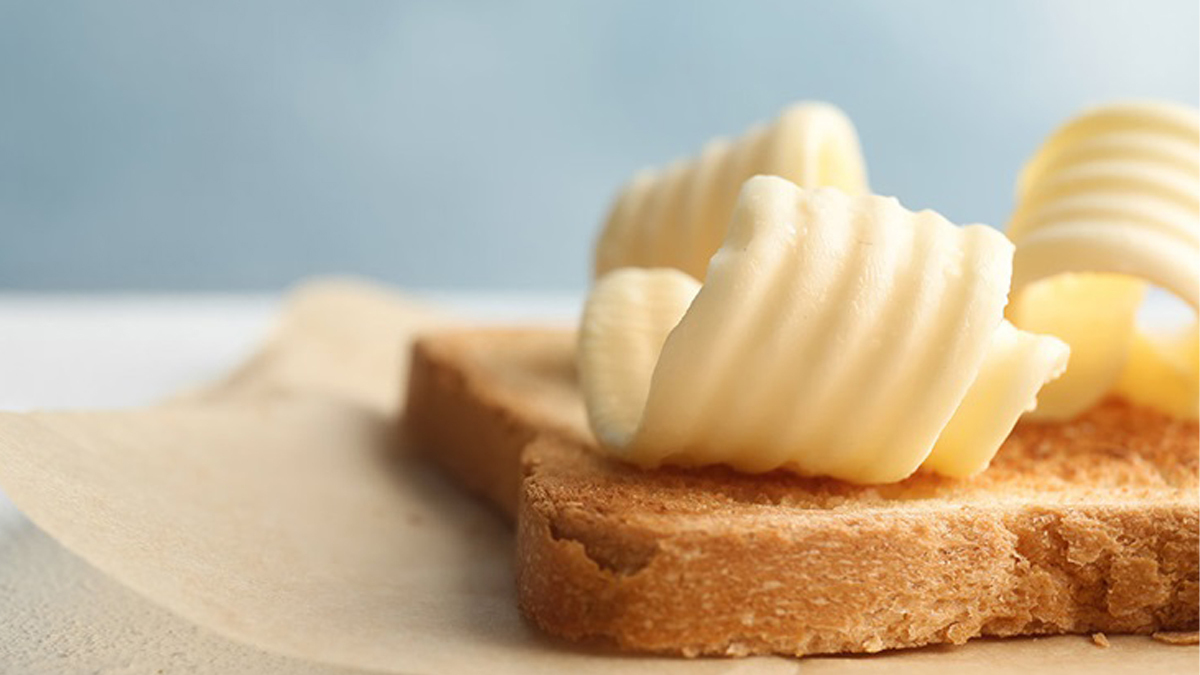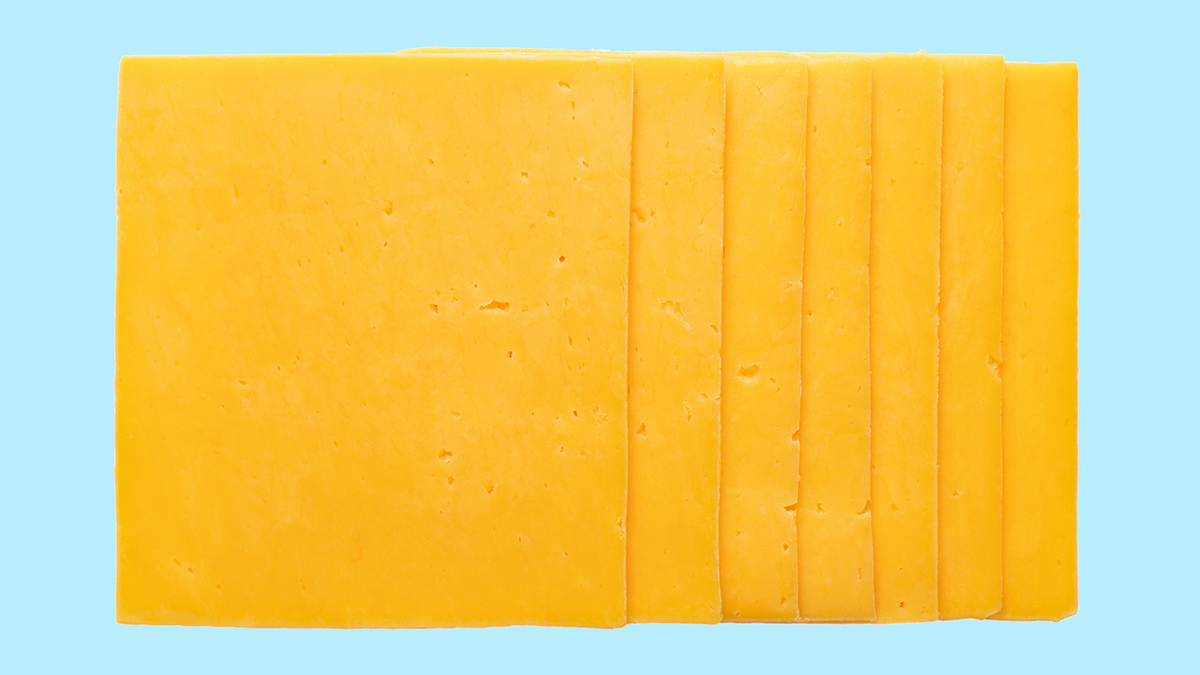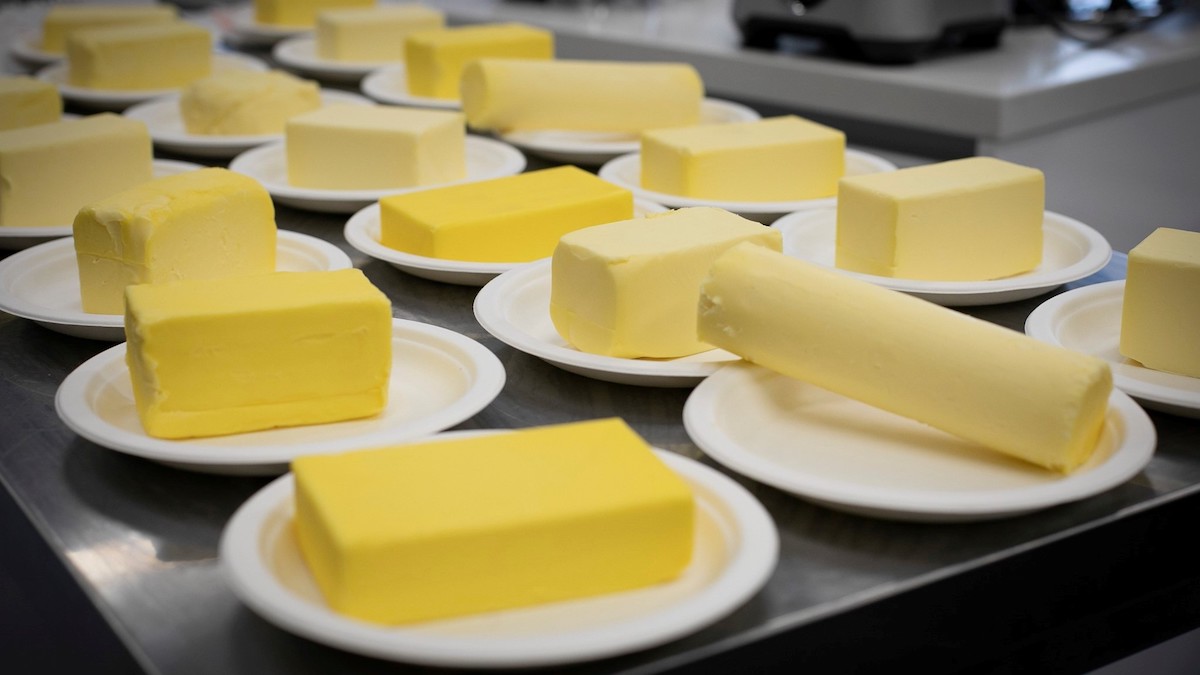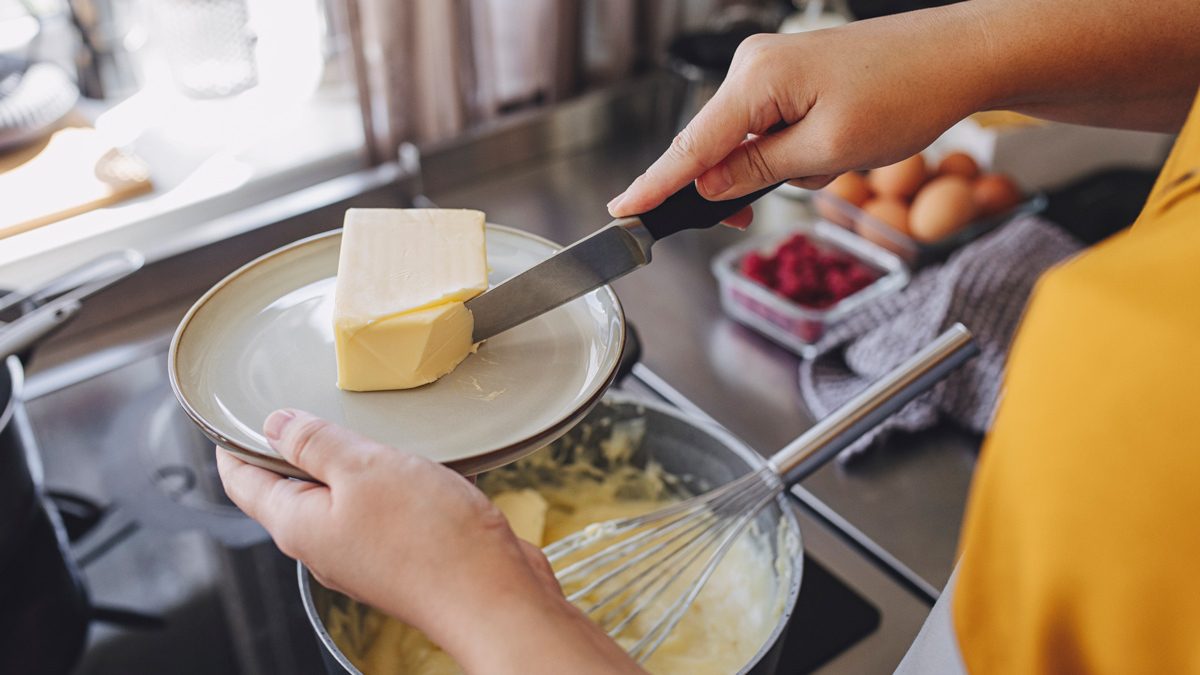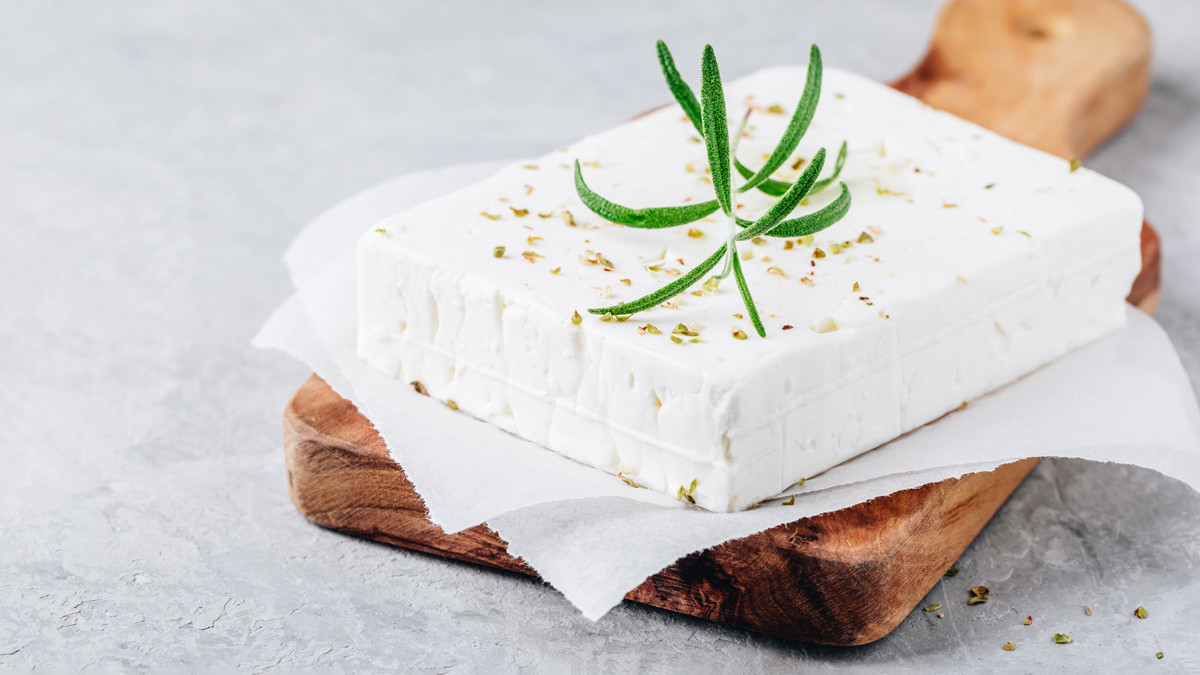Get our independent lab tests, expert reviews and honest advice.
What’s the best tasting butter?
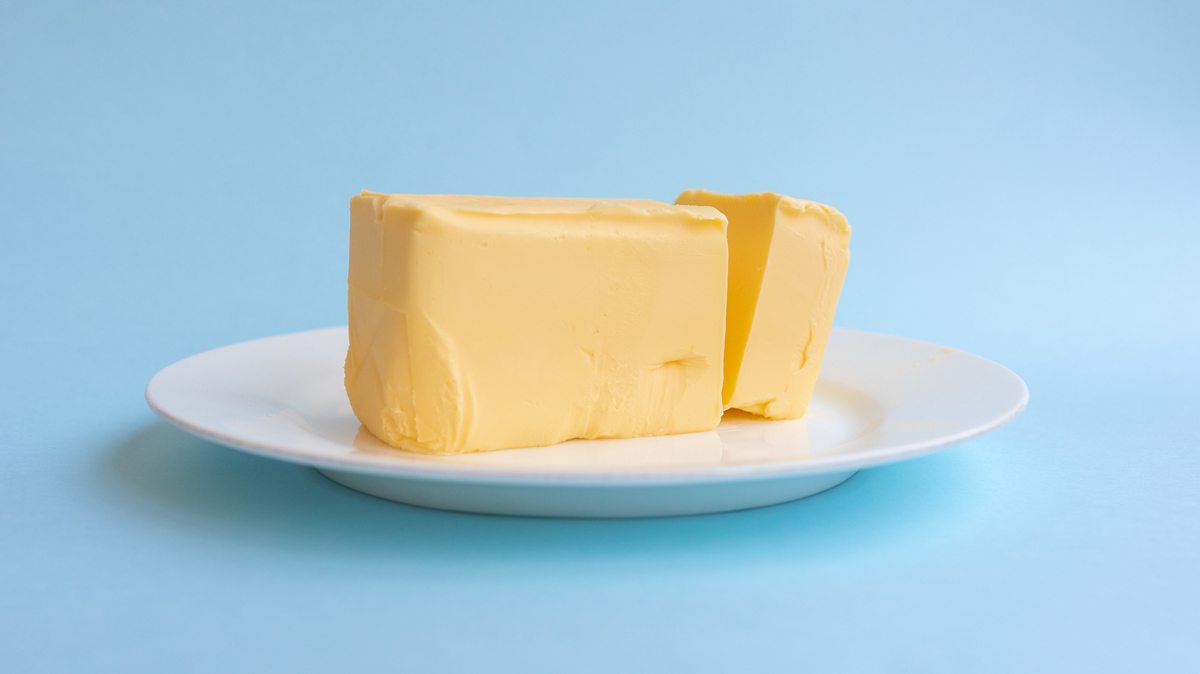
Need to know
- Eight experts taste tested 44 different types of butter
- The butter was split into three categories: unsalted, salted and cultured
- Australian-made butters had some serious competition
On this page:
- Best tasting unsalted butter
- Best tasting salted butter
- Best tasting cultured butter
- What is butter made of?
- What is cultured butter?
- The science of butter
- How we test
Butter is made from essentially just one ingredient – cream – so you’d be forgiven for thinking that all butter must taste the same. But its flavour and texture can differ depending on whether it’s salted, salt reduced or unsalted, how well it’s blended, whether it’s cultured or not, where it’s from and what the cows feed on, among other things.
So which butter tastes best? We blind tasted and reviewed 44 butters, from brands including Devondale, Lurpak, Mainland, Pepe Saya and Western Star, to find out which is the cream of the crop.
We categorised the butter into three groups: unsalted, salted and cultured.
Boasting a “rich golden colour” and “unique creamy flavour and smooth mouthfeel”, Westgold’s Unsalted New Zealand Grass-fed Butter scored the highest in the unsalted butter category with a CHOICE Expert Rating of 75%.
The highest-scoring salted butters were Kerrygold Pure Irish Salted Butter (with a CHOICE Expert Rating of 79%) and Lurpak’s Slightly Salted Butter (76%). The Kerrygold salted product was also the best performing butter overall in our taste test.
As for the cultured category, Tasmania took out the top prize with its Meander Valley Salted Cultured Butter scoring 76%. However, at $3.08 per 100g, it’s on the more expensive side compared with the top performers in the other categories (Westgold Unsalted New Zealand Grass-fed Butter is $1.25 per 100g and Kerrygold Pure Irish Salted Butter is $2.40 per 100g).
Here are the top performing butters in our test, listed by category.
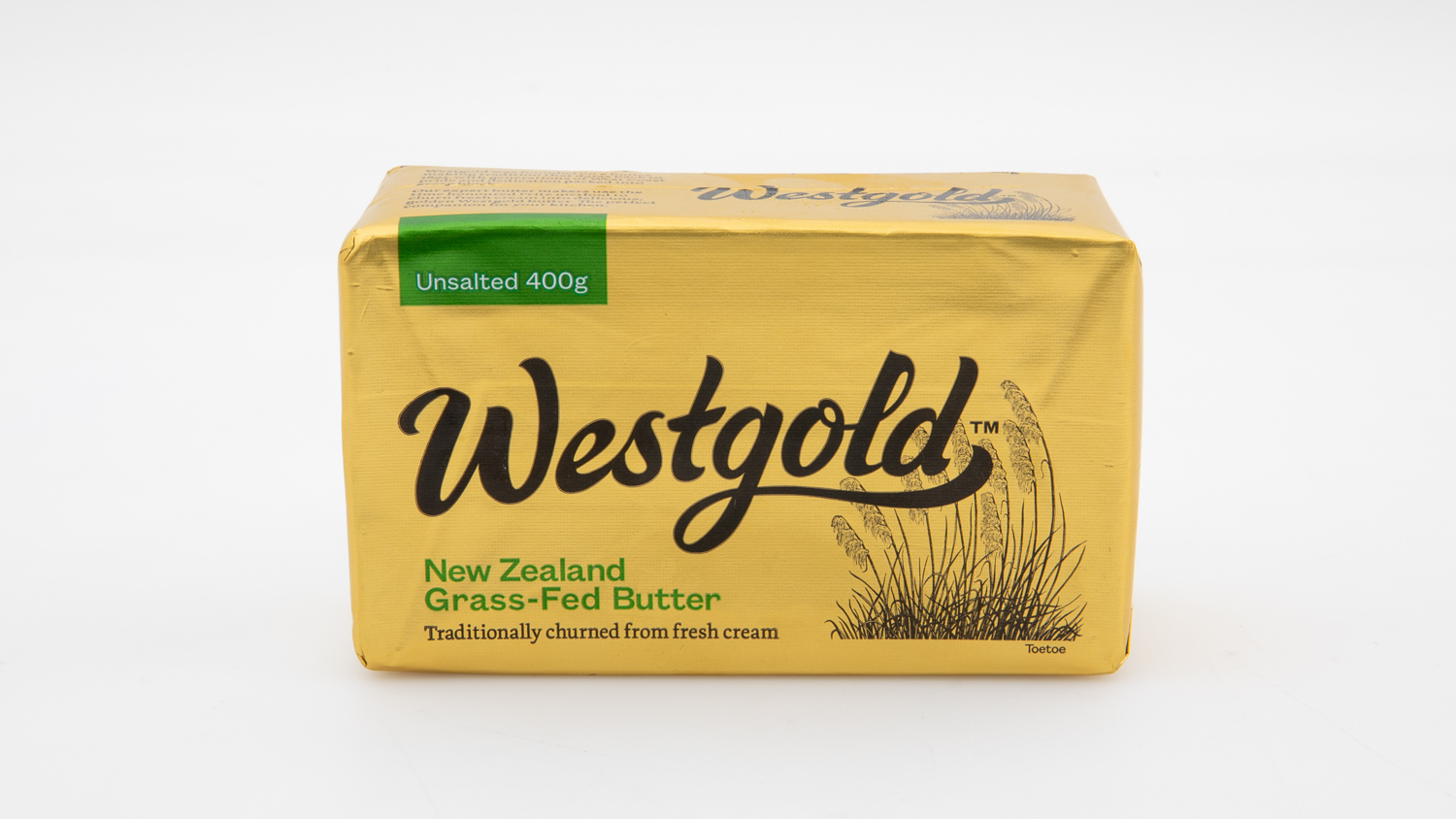
Best tasting unsalted butter
Westgold Unsalted New Zealand Grass-fed Butter
CHOICE Expert Rating: 75%
Price per 100g: $1.25
Country of origin: New Zealand
Experts say: “Mild creamy aroma, fresh, clean flavour and aftertaste”. “Slightly cheesy smell, mild dairy aroma”.
Unsalted butter overall scores and price per 100 grams
Westgold Unsalted New Zealand Grass-fed Butter: CHOICE Expert Score 75%. Price per 100 grams $1.25.
Kerrygold Pure Irish Butter Unsalted: CHOICE Expert Score 73%. Price per 100 grams $2.40.
Mainland Pure New Zealand Unsalted Butter: CHOICE Expert Score 73%. Price per 100 grams $2.00.
Allowrie Unsalted butter Choicest Grade: CHOICE Expert Score 73%. Price per 100 grams $1.92.
Lurpak Butter Unsalted: CHOICE Expert Score 73%. Price per 100 grams $2.60.
Devondale Unsalted Butter: CHOICE Expert Score 73%. Price per 100 grams $1.84.
Dairy Farmers Unsalted Butter: CHOICE Expert Score 73%. Price per 100 grams $1.54.
True Organic Australian Organic Unsalted Butter: CHOICE Expert Score 72%. Price per 100 grams $2.80.
Macro Certified Organic Unsalted Butter: CHOICE Expert Score 71%. Price per 100 grams $1.84.
The Organic Milk Co Australia Organic Butter Unsalted: CHOICE Expert Score 70%. Price per 100 grams $2.00.
Great Ocean Road Butter Unsalted: CHOICE Expert Score 69%. Price per 100 grams $2.08.
Coles Certified Organic Unsalted Butter: CHOICE Expert Score 68%. Price per 100 grams $1.84.
Coles Australian Butter Unsalted: CHOICE Expert Score 68%. Price per 100 grams $1.52.
Aldi Beautifully Butterfully Unsalted: CHOICE Expert Score 67%. Price per 100 grams $1.38.
Absolute Organic Unsalted Butter: CHOICE Expert Score 66%. Price per 100 grams $3.56.
Mainland Certified Organic Unsalted Butter: CHOICE Expert Score 66%. Price per 100 grams $2.20.
Western Star Unsalted Butter: CHOICE Expert Score 64%. Price per 100 grams $1.72.
Woolworths Australian Butter Unsalted: CHOICE Expert Score 61%. Price per 100 grams $1.60.
President French Made Unsalted Butter: CHOICE Expert Score 59%. Price per 100 grams $2.75.
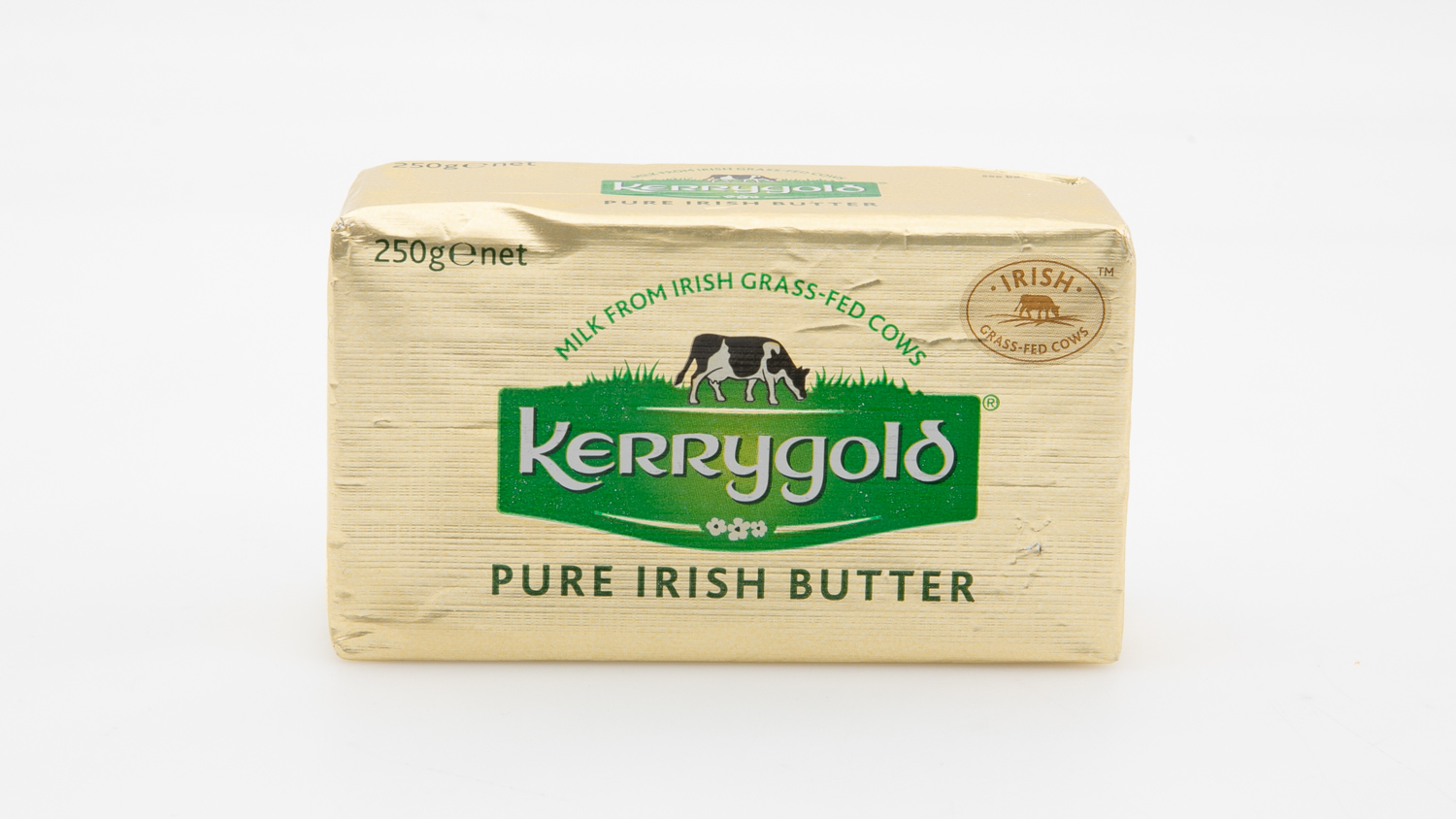
Best tasting salted butter
Kerrygold Pure Irish Salted Butter
CHOICE Expert Rating: 79%
Price per 100g: $2.40
Country of origin: Ireland
Experts say: “Smooth, yellow, irregular appearance, mild butter aroma with salty butter taste”. “Good body and texture”.
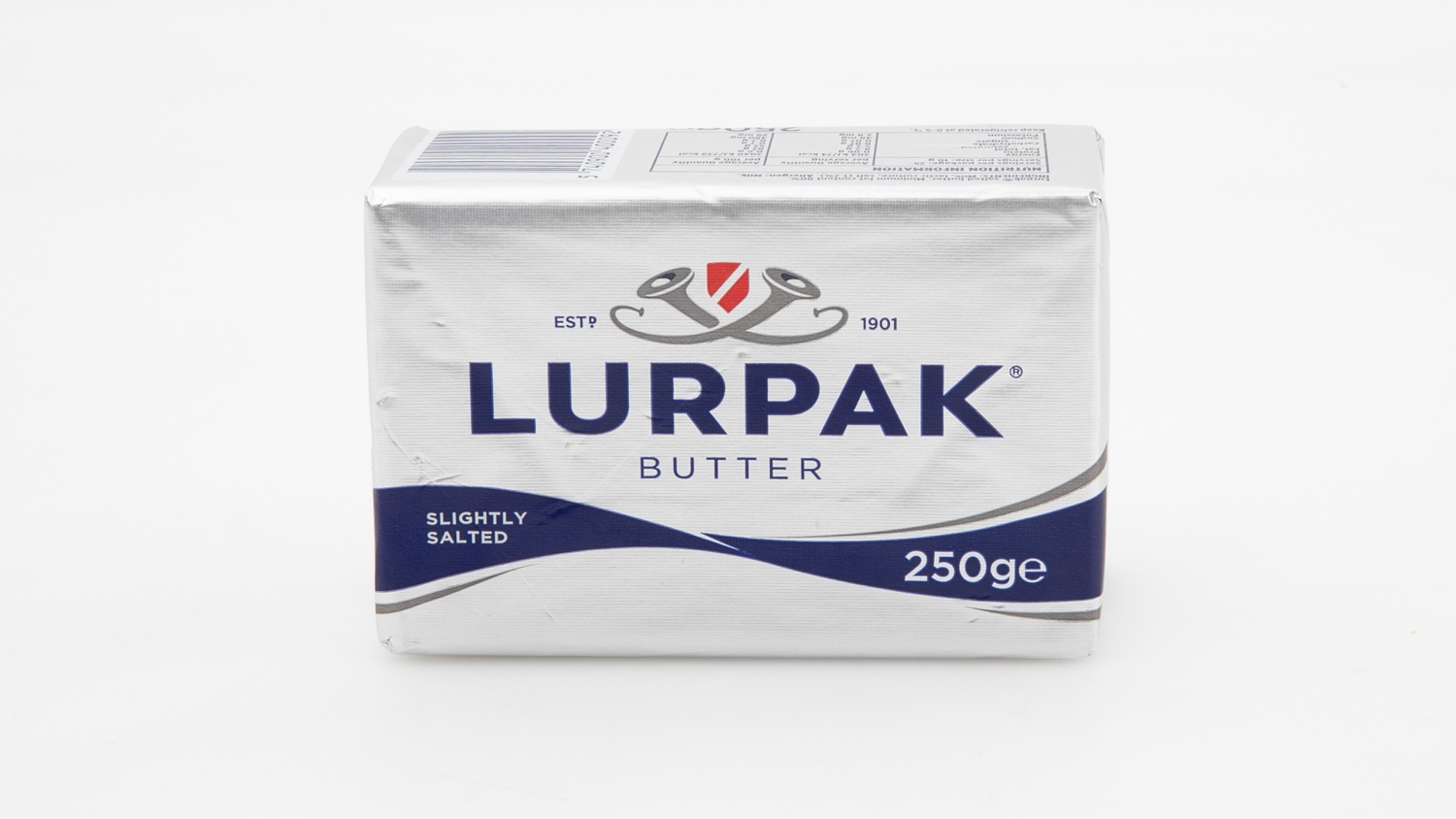
Lurpak Slightly Salted Butter
CHOICE Expert Rating: 76%
Taste test score: 84%
Price per 100g: $2.40
Country of origin: Denmark
Experts say: “Delicate saltiness, not overpowering, mild flavour, short finish and aftertaste, melts quickly”. “Smooth texture and pale, even colour”.
Salted butter overall scores and price per 100 grams
Kerrygold Pure Irish Salted Butter: CHOICE Expert Score 79%. Price per 100 grams $2.40.
Lurpak Butter Slightly Salted: CHOICE Expert Score 76%. Price per 100 grams $2.40.
Ballantyne Traditional Salted Butter: CHOICE Expert Score 74%. Price per 100 grams $3.40.
Coles Australian Butter Salted: CHOICE Expert Score 74%. Price per 100 grams $1.60.
Mainland Certified Organic Butter Salted: CHOICE Expert Score 73%. Price per 100 grams $2.20.
Dairy Farmers Salted Butter: CHOICE Expert Score 73%. Price per 100 grams $1.54.
Macro Certified Organic Butter Salted: CHOICE Expert Score 73%. Price per 100 grams $1.84.
Western Star Original Salted Butter: CHOICE Expert Score 72%. Price per 100 grams $1.72.
Mainland Pure New Zealand Salted Butter: CHOICE Expert Score 72%. Price per 100 grams $2.00.
The Organic Milk Co Organic Salted Butter: CHOICE Expert Score 72%. Price per 100 grams $2.00.
Great Ocean Road Butter with Sea Salt: CHOICE Expert Score 72%. Price per 100 grams $2.08.
Aldi Beautifully Butterfully Salted Butter: CHOICE Expert Score 71%. Price per 100 grams $1.38.
Westgold Salted New Zealand Grass-fed Butter: CHOICE Expert Score 70%. Price per 100 grams $1.25.
President French-Made Salted Butter: CHOICE Expert Score 69%. Price per 100 grams $2.75.
Harris Farm Butter Salted: CHOICE Expert Score 67%. Price per 100 grams $1.60.
Coles Certified Organic Butter Salted: CHOICE Expert Score 66%. Price per 100 grams $1.84.
Woolworths Australian Salted Butter: CHOICE Expert Score 65%. Price per 100 grams $1.60.
Devondale Salted Butter: CHOICE Expert Score 65%. Price per 100 grams $1.84.
Pure Valley Organic Australian Butter Salted: CHOICE Expert Score 63%. Price per 100 grams $1.60.
True Organic Australian Organic Salted Butter: CHOICE Expert Score 63%. Price per 100 grams $2.80.
Absolute Organic Salted Butter: CHOICE Expert Score 63%. Price per 100 grams $3.56.
Allowrie Choicest Butter Salted: CHOICE Expert Score 62%. Price per 100 grams $1.92.
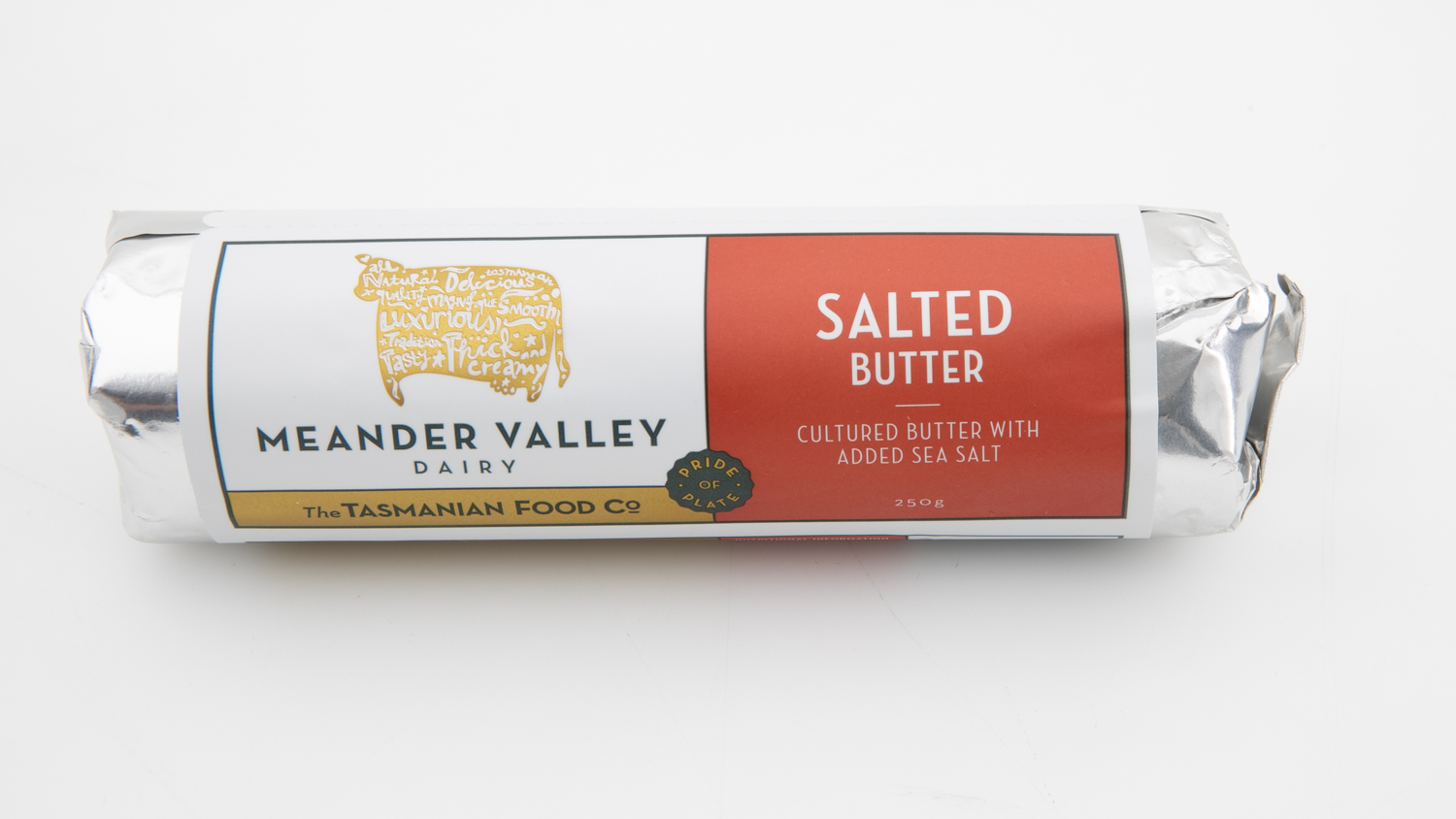
Best tasting cultured butter
Meander Valley Salted Cultured Butter
CHOICE Expert Rating: 76%
Price per 100g: $3.08
Country of origin: Australia
Experts say: “Subtle cultured butter flavour”. “Creamy flavour and texture”. “Smells amazing”. “Fair spreadability”. “Bit firm”.
|
Brand |
Name |
CHOICE Expert Rating |
Price per 100g |
|---|---|---|---|
|
Meander Valley |
Salted Butter Cultured |
76% |
$3.08 |
|
Lard Ass |
Cultured Butter Salted |
60% |
$5.33 |
|
Pepe Saya |
Australian Cultured Salted Butter |
59% |
$4.00 |
What is butter made of?
Butter is nothing more than cream, with salt sometimes added. So how does it go from cream to butter?
In ‘On Food and Cooking: The Science and Lore of the Kitchen’, sometimes referred to as ‘the chef’s bible’, author Harold McGee describes making butter as a simple but laborious task created by agitating a container of cream until the fat globules are damaged and the fat leaks out and sticks together in masses large enough to gather. These solids form the butter, and what is left over is buttermilk.
It may seem like there’s not much to the taste of butter – which is essentially milk fat – but there are many factors that impact the flavour of the milk that makes the cream that then goes on to make the butter. The season, the environment, the cow’s breed, its feed and the processing all make a difference to the flavour of the milk.
As for the colour of butter, the amount of grass in a cow’s diet plays a role here. Grass gives the milk a yellow pigment, so cows that have less grass in their diet often produce a paler butter.
What is cultured butter?
Cultured butter is when the cream used to make the butter is slightly soured by adding lactic acid bacteria before or after it’s churned. This is common practice in Europe and the flavour has been described as a bit more sour and fuller than non-cultured butter.
When categorising butters for this test, we only included butters in the cultured category that specified ‘cultured’ on the front of the pack.
Is Australian butter good?
There seems to be an assumption that European butter, in particular French butter, is the best in the world. This may be because European butter usually has added cultures and often a higher fat content, which is believed to contribute to a better flavour and texture.
In our butter taste test, first and equal-second place went to European butters (from Ireland and Denmark), while an Australian product tied for second and a New Zealand product came third.
The one salted French butter that we taste-tested, President French-Made Salted Butter, was in the top 10 of results overall, but the President French-Made Unsalted Butter received the lowest score in its category with 59%.
Admittedly, we only tested two French-made products compared to the 29 Australian butters tested, but perhaps we can still conclude that Australian butter can be very good.
We tested 31 butters from Australia, four butters from New Zealand, and two each from Denmark, Belgium, France, and Ireland.
The science of butter
The connection between milk fat and taste
In Australia, butter must comprise at least 80% milk fat. Some say that the higher the milk fat percentage, the richer the butter tastes. However, we didn’t see a correlation between milk fat percentage and our taste test results.
For example, the product with the highest percentage of milk fat in our test, Meander Valley Cultured Salted Butter (86.6% milk fat), was in the top three scorers for taste alone (that is, not factoring in the nutrition component that makes up the overall score).
But the products with the next highest percentage of milk fat after Meander Valley (Coles Organic Unsalted Butter with 84.7% milk fat and Remarkable Milk Company True Organic Butter Unsalted with 84.6% milk fat) hovered around the middle of the list in terms of their taste performance.
The butter with the equal-lowest percentage of milk fat – Kerrygold Pure Irish Salted Butter, 80% – was the one that took out the top spot in our test, both overall and for taste alone.
Is grass-fed butter better for you?
Most cows (about 98%) in Australia are free to graze on pastures. However, grass-fed cows don’t only eat grass. In Australia their diet is about 60–65% grass, with additional nutrition coming from hay, grains and legumes to provide a complete and balanced diet.
Grass-fed dairy has a slightly different nutritional profile to dairy products that come from regular-fed cows. Grass-fed cows produce milk with a slightly higher omega-3 content, beta-carotene and beneficial fats, so grass-fed butter may be slightly better for you than butter made with cream from cows not predominantly fed grass.
Fourteen of the butters in this test were specified to be from grass-fed cows, with two of them labelled as coming from ‘free-grazing cows’.
Spreadability
There is a science to making butter spreadable, and it’s all about the crystals and the free fats.
After the cream is pasteurised, it’s cooled and left at 5℃ for about eight hours. This process causes about half of the milk fat in the globules to form crystals. The amount and size of these crystals help determine the texture of the butter.
When the butter is finally produced, it’s a matrix of fat globules, solid crystals and water droplets that are embedded in a mass of semi-solid ‘free’ fat. A high proportion of ‘ordered’ crystals leads to butter that is stiff and firm when cold. The amount of crystals compared to free fat determines the butter’s spreadability. The free fat gives the butter more spreadability and tendency to leak liquid fat as the butter softens.
We had our expert taste testers comment on the spreadability of the salted butters on soft white bread.
If you’re keen to avoid shredded bread, here are some of the notable super spreaders:
- Ballantyne Salted Butter – “spreads easily when firm”; “nice spread, really easy”.
- Aldi Beautifully Butterfully Salted Butter – “best spreadability so far”; “smooth and easy to spread”.
- Absolute Organic Salted Butter – “spreads very easily, the softest of all butters”; “easy, spreads well”.
- Kerrygold Salted Butter – “texture is very good”; “easily spreadable”.
- Dairy Farmers Salted Butter – “very good texture for spreading”.
What butter do top chefs use?
Butter is versatile and can be used for baking, sauces and frying (though for frying you’ll get a better result with clarified butter, which is butter that’s had the milk solids removed, as it has a higher burning point). Adam Moore, a chef and food consultant who was part of our expert tasting panel, says that butter adds “depth into sauces, mashed potatoes, purees and steak”.
Adam says the type of butter that top chefs use will depend on what they’re cooking, but they “usually use a cultured butter for more flavour”.
His hot tip for home cooks is to try cooking with smoked butter to elevate your roast chicken to the next level, and flavoured butter (sweet or savoury) to enhance any dish.
Tips for buying, storing and using butter
Buying
- Light and air can each cause oxidation of butter, which affects its taste. Oxidised butter is darker yellow on the outside where it has been exposed. Avoid buying inadequately wrapped products, and be mindful that butters packaged in semi-transparent white wrapping are more susceptible to surface oxidation than those wrapped in opaque foil due to risk of exposure to light during storage or transportation.
- Cultured butter has had live bacterial cultures added to the cream, which causes the butter to taste slightly tangier and have a more distinctive aroma. This is due to the fermentation process by the bacterial culture which converts milk sugar (lactose) into lactic acid. Culture was traditionally added to help extend the shelf life of butter, but today it’s more often done to create a unique flavour profile.
Using
- If serving butter at room temperature, only cut off the amount you know you’ll use and leave the rest in the fridge.
- If you need to bring cold butter to room temperature fast, expert taste tester Adam More suggests grating it.
- Unsure whether to use salted or unsalted butter? CHOICE home economist Fiona Mair says it’s not so important if you use salted or unsalted for your savoury meals as you can always adjust the salt throughout the cooking. Unsalted butter is ideal for sweet baking and savoury pastry as you won’t run the risk of the salt overpowering other flavours. It can be used in all other cooking – just add your own salt if needed.
Storing
- Storing butter requires coolness and darkness.
- Make sure your butter is tightly wrapped or stored in an airtight container. This will prevent exposure to oxygen and also prevent fridge odours from absorbing into the butter.
- Homemade butter will last in the fridge for up to two weeks, depending on the extraction of buttermilk and if salt was added.
- Butter can be frozen for up to 12 months if salted, and six months if unsalted.
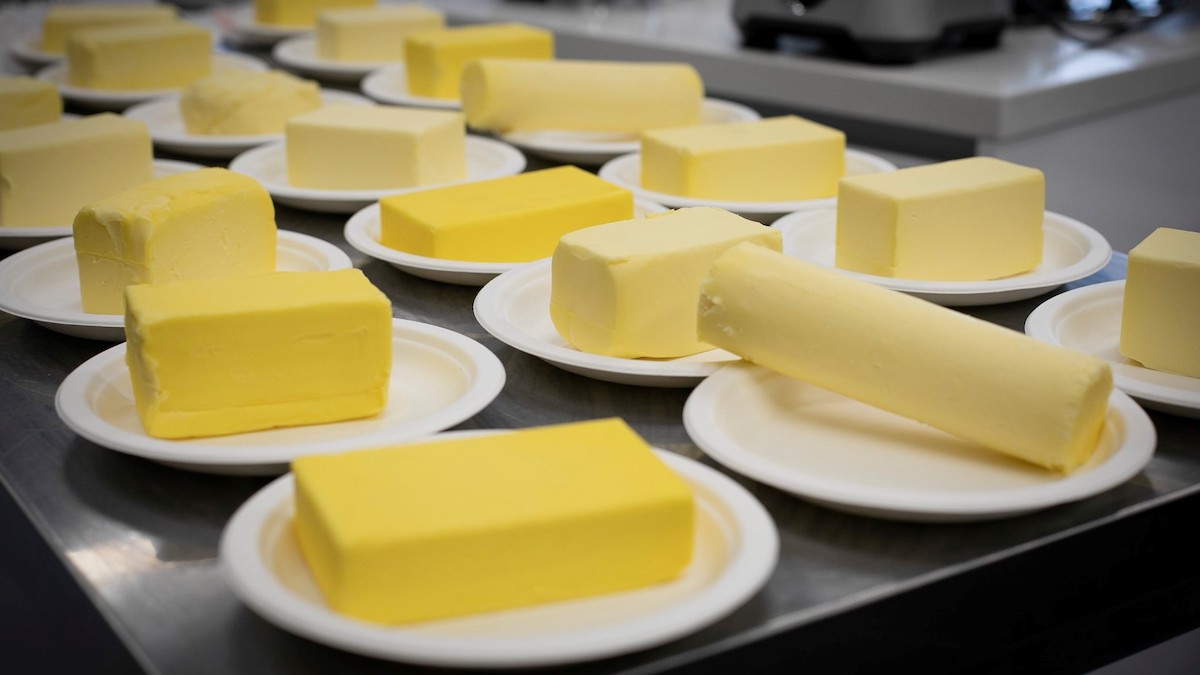
How we test
Products
We tested butters that are available at major supermarket chains and online, including salted, unsalted and cultured varieties. Price is based on price in stores for a 250g block or closest (not on special) in September 2022. A total of 44 supermarket products were tested.
Tasting
Our experts tasted the butter samples blind (without knowing the brands) in a randomised order.
Scores
Experts independently judged all butters, scoring each sample for flavour and aroma, texture and presentation.
The overall score (what we call the CHOICE Expert Rating) is made up of taste 90% (50% flavour and aroma, 30% texture, 20% presentation) and nutrition 10% (100% Health Star Rating, calculated from the details in the nutrition information panel and converted to a percentage).
We recommend products with a CHOICE Expert Rating of 75% or more.

Meet our expert taste testers
Brigid Treloar has been a freelance food consultant for over 30 years. The author of eight cookbooks, she contributes to newspapers and magazines, reviews restaurants, judges cookery and recipe competitions, and judges chocolate in the Sydney Royal Fine Food Show Competition. Brigid is also an industry assessor for Le Cordon Bleu and advises many of Australia’s food companies on product and recipe development.
Penny Lawson is a self-diagnosed ‘curd nerd’ with 20 years’ experience in the food industry, including dairy judging at Royal Agricultural Society produce competitions in Sydney and Melbourne. She’s been at the forefront of the specialty cheese sector as a retailer and commentator and is a passionate supporter and promoter of Australian producers. You can find her tasting, selling and grilling cheese at her shop, Penny’s Cheese Shop, in Sydney’s Potts Point.
Petra Sugiarto has an academic background in food technology and microbiology and has been working in the food industry for more than 20 years, in particular the dairy industry in various applications including yoghurt, cheese, ice cream/gelato and dairy desserts. For the past 14 years she’s been on the judging panels for the Dairy Industry Association of Australia (DIAA) and Sydney Royal Cheese & Dairy Produce competitions and for the Australian Grand Dairy Awards.
Peter Commins recently retired from the NSW Food Authority after 44 years, during which time his main line of work was auditing Food Safety Programs – mainly with the dairy industry – for compliance to the Food Standards Code and Food Act. Peter has judged dairy produce for the DIAA and Sydney Royal competitions for more than three decades.
Amanda Athis has been involved in the hospitality industry for over 30 years. With qualifications in commercial cookery and hospitality management, she has seen all areas of the food industry from working in kitchens at the Sydney Opera House to operating as head chef and holding management positions in cafes and restaurants around Sydney. Amanda now enjoys sharing her skills and knowledge while lecturing at Le Cordon Bleu Culinary College, Sydney.
Daniel Abou-Chedid has more than a decade of experience as a professional chef and consultant within the food industry. He’s been a cooking ambassador for kitchen appliance brands, delivered live culinary demonstrations across Australia for companies including Domayne and Westfield, and made guest appearances as a chef for P&O Cruises. As well as his consulting work, Daniel runs the onsite catering business Fork n’ Knife, which he established, as well as Gosford eatery At Baker Street.
Adam Moore is a prolific culinary judge. His credits include judging for Le Cordon Bleu cooking school and Royal Agricultural Society (RAS) Fine Food competitions across a range of categories. He has formal qualifications in pastry, charcuterie and butchery, sensory evaluation, food styling and food photography. With more than 25 years in the industry, he has worked in restaurants, food service, retail, food manufacturing, marketing and sales. He’s a certified global executive chef, and culinology director at Culinary Revolutions.
Andre Sanderson has worked, managed and taught as a pastry chef, with more than 25 years of industry experience across hotels, restaurants and production patisseries in Japan, Britain, Switzerland, China and Australia. He holds a diploma in Food Technology and has achieved the highest professional accolades competing in global patisserie and gelato competitions with success. As chocolatier at Zokoko, a Sydney-based bean to bar chocolate manufacturer, Andre develops both cafe and retail solutions addressing classic and emerging food trends.

